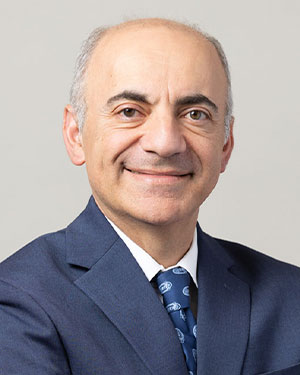Ramin Davidoff, MD, on value-based care and how it benefits older adults.

7 steps to health care innovation in geriatrics
Medical best practices for supporting older adults often differ from those that form the bedrock of care for younger individuals. To better meet the unique needs of an aging U.S. population, Ramin Davidoff, MD, co-CEO of The Permanente Federation, describes in a MedPage Today op-ed how key health care innovations can help primary care physicians deliver evidence-based, high-quality care that meets the unique needs of older adults, even if they were not specially trained in geriatrics.
People today are living longer than ever before — it’s estimated that by 2040 more than 1 in 5 Americans will be 65 or older. This aging of the American population is occurring as health care worker and physician shortages mount. In fact, by 2034 the U.S. will face an estimated shortage of 48,000 primary care physicians. Compounding the issue: primary care physicians provide the bulk of care to older adults.
In the article, Dr. Davidoff notes that health care leaders must look for ways to prepare for the coming demographic shift. They’ll need to evolve care and find innovative ways to support primary care physicians and specialists as they encounter more and more older patients that often have multiple health conditions.
Related health care innovation story: Replay: Permanente Live — Meeting the health needs of an aging population
Specifically, Dr. Davidoff recommends 7 steps health care organizations should consider to improve care for older patients:
- Geriatricize primary care so that all physicians understand how to deliver high-quality care that meets the needs of the growing population of older adults.
- Align care with the preferences and goals of older adults and their families, particularly when intensive surgeries or treatments may interfere with the patient’s goals and preferences.
- Take a physician-led, team-based approach to coordinate care between primary care physicians and the increased number of specialists many older adults see.
- Focus on proactive and preventative screening for diseases such as dementia and colorectal cancer that affect older adults at particularly high rates.
- Review prescription medications regularly to monitor for harmful combinations and identify drugs that are no longer necessary or have side effects that interfere with older adults’ ability to do what’s important to them.
- Apply an equity lens to care and address social determinants of health, including recognizing the different aging experiences of historically excluded populations.
- Move care into the home when possible, which is often safer and more comfortable for older adults.
Related health care innovation story: In health care innovation, what’s old is new again, writes Ramin Davidoff, MD
Dr. Davidoff’s op-ed highlights the need to keep pace with the constant transformation of health care and to ensure all care is patient-centered and age-appropriate.
Note: Read Dr. Davidoff’s entire article on MedPage Today.


